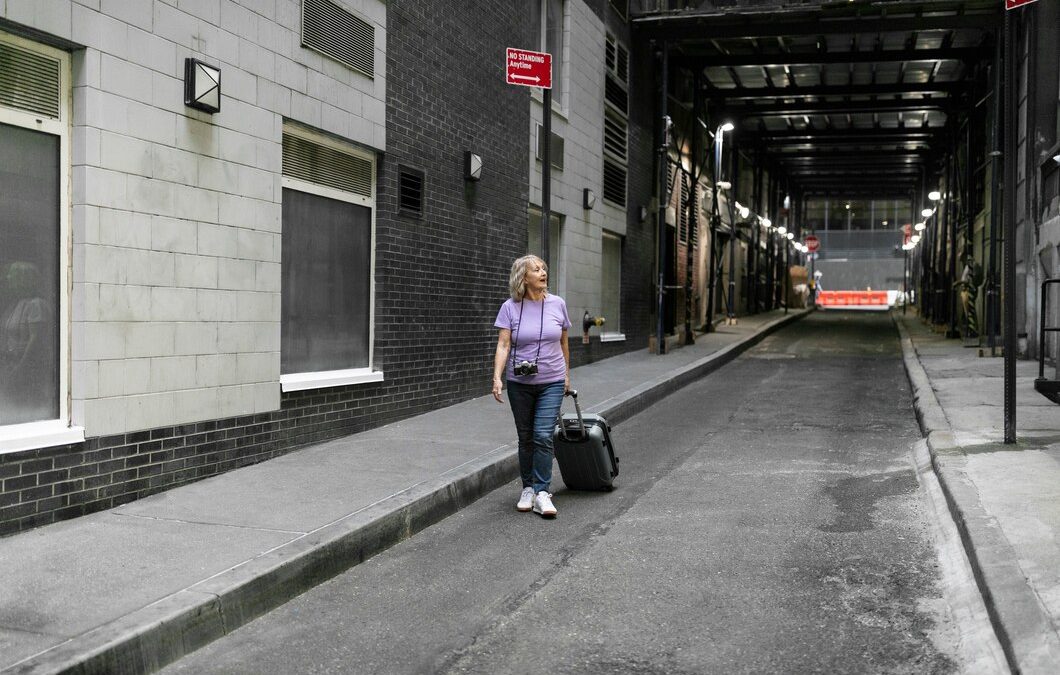Uneven sidewalks can be more than just an eyesore; they can be a safety hazard too. Tripping over a raised section of a sidewalk can lead to injuries, making it essential to address the issue as soon as you spot it. Whether it’s due to tree roots, weather changes, or settling ground, an uneven sidewalk can appear almost anywhere.
Understanding Why Sidewalks Become Uneven
Sidewalks can become uneven for various reasons, and understanding these reasons can help you prevent future problems. Here are some common causes:
- Tree Roots: Tree roots are a major culprit behind uneven sidewalks. As trees grow, their roots spread out underground. These roots can push up concrete slabs, making the sidewalk uneven. This is especially common with older or larger trees planted close to the sidewalk.
- Soil Settlement: Over time, the soil beneath a sidewalk can settle or compress. When this happens, the concrete slabs may sink or tilt. This settlement can be caused by poor soil compaction during the initial construction or from water erosion.
- Freezing and Thawing: In regions with cold climates, the freeze-thaw cycle can cause sidewalks to become uneven. Water that seeps into the ground can freeze and expand, lifting the concrete. When the ice melts, the ground contracts, causing the concrete to settle unevenly.
- Heavy Loads: Sidewalks are designed for foot traffic, not heavy loads. Parking vehicles or placing heavy objects on sidewalks can cause the concrete to crack or sink over time.
- Poor Installation: If a sidewalk is not installed correctly, it can become uneven much faster. Improper compaction of the soil and inadequate support beneath the concrete slab can lead to issues.
By identifying the causes of uneven sidewalks, you can better plan your repair and take steps to prevent the same problems from recurring.
Tools and Materials You’ll Need
Before you start leveling your sidewalk, gather the necessary tools and materials. Here’s a list to help you prepare:
- Safety Gear: Safety is crucial. Wear gloves, safety glasses, and a dust mask to protect yourself from debris and dust.
- Shovel: A shovel is essential for digging and removing any dirt or debris from beneath the sidewalk slab. A flat-edged shovel works best for digging under concrete.
- Concrete Leveling Compound: For minor leveling, a concrete leveling compound can be used. This self-leveling compound fills in small gaps and cracks, making the surface even.
- Jackhammer or Concrete Saw: For larger repairs, you may need a jackhammer or concrete saw to break up the existing concrete. This is usually necessary when a slab must be removed and replaced.
- Concrete Mix: If you need to pour new concrete, you’ll need a concrete mix. Ready-mix concrete is convenient and easy to use.
- Trowel and Float: These tools help you spread and smooth new concrete. A trowel is used for applying the concrete, while a float helps create a smooth finish.
- Tamping Tool: To compact the soil under the sidewalk, use a tamping tool. This helps prevent future settlement issues.
- Measuring Tape and Level: These tools ensure your repair is even and level. A level helps you check the surface, while measuring tape is used for accurate measurements.
Having the right tools and materials on hand makes the job easier and ensures a more professional result. Once you’re equipped, you can move on to the step-by-step guide for leveling your sidewalk.
Step-by-Step Guide to Leveling Your Sidewalk
Leveling your sidewalk might seem daunting, but following these steps will help you get the job done efficiently:
- Prepare the Area: Start by clearing any debris, dirt, or loose concrete from the uneven area. Use a shovel to remove soil or stones from under the slab that needs adjusting. Ensure the area is clean and ready for work.
- Drill Holes (If Needed): If you are planning to use a concrete leveling compound, you may need to drill small holes into the uneven slab. This allows the compound to spread evenly under the surface. Use a hammer drill and 5/8-inch masonry bit to drill the holes.
- Lift the Slab: For larger adjustments, you might need to lift the concrete slab. Use a pry bar to carefully lift the slab until it’s level with the surrounding surfaces. If necessary, use a jack to help hold the slab in place.
- Apply Leveling Compound: Inject the concrete leveling compound into the drilled holes using a caulking gun. The compound will spread and fill gaps, lifting the slab as it expands. Smooth out any excess compound with a trowel.
- Fill and Smooth: If the slab needs new concrete, fill the gaps or cracks with ready-mix concrete. Use a trowel to spread the concrete evenly and a float to smooth the surface. Ensure the new concrete is level with the old slabs.
- Let it Cure: Allow the leveling compound or new concrete to cure as per the manufacturer’s instructions. This usually takes 24 to 48 hours. Keep the area free from foot traffic and other disturbances during this time.
By following these steps, you can level your sidewalk and make it safe and aesthetically pleasing again.
Maintenance Tips to Prevent Future Issues
Preventing your sidewalk from becoming uneven again requires regular maintenance. Here’s what you can do:
- Inspect Regularly: Conduct regular inspections of your sidewalk to catch any early signs of unevenness or cracks. Addressing small issues before they become significant problems can save you a lot of effort and money.
- Control Water Drainage: Ensure that water drains away from your sidewalk. Poor drainage can cause soil erosion and lead to uneven surfaces. Install gutters, downspouts, and proper grading to direct water away from your sidewalk.
- Trim Trees and Roots: Keep the trees near your sidewalk trimmed, and control the growth of their roots. You might need to install root barriers to prevent roots from pushing up the concrete slabs.
- Avoid Heavy Loads: Don’t park vehicles or place heavy objects on your sidewalk. Heavy loads can cause the concrete to crack or sink. If you need to place something heavy, use a temporary support structure.
- Seal Cracks Early: Seal any small cracks you find during your inspections. Use a concrete sealant to fill in cracks and prevent water from seeping in, which can cause further damage.
- Re-Level Periodically: Sometimes minor leveling might be needed even with preventive measures. Regularly check and re-level small sections to avoid extensive repairs later.
By applying these maintenance tips, you can keep your sidewalk in good condition and prevent future unevenness.
Conclusion
A well-maintained sidewalk enhances the curb appeal and safety of your property. By understanding why sidewalks become uneven and having the right tools, you can tackle sidewalk leveling with confidence. Regular inspections and preventive measures will help keep your sidewalk smooth and safe for years to come.
Don’t let an uneven sidewalk become a hazard on your property. At Lift-Texas Construction, we specialize in concrete leveling and repairs to ensure your walkways are safe and aesthetically pleasing. Contact us today to learn more about how we can help you maintain a level and secure sidewalk. Let us take your project to a whole new level of excellence.


This blog provides an excellent guide on leveling uneven concrete sidewalks, highlighting both the causes of unevenness and practical DIY solutions. The step-by-step instructions are clear and accessible, making it easy for homeowners to tackle this important maintenance task.
I respect that you guys are providing legitimate information for people to use on their own, but we usually recommend to customers to get leveling done professionally. Solid information though.
Great blog! Leveling a concrete sidewalk may seem tricky, but your easy DIY tips make the process more manageable for homeowners. These steps help ensure a smooth, safe surface without the need for professional help. Thanks for sharing these practical and helpful ideas!